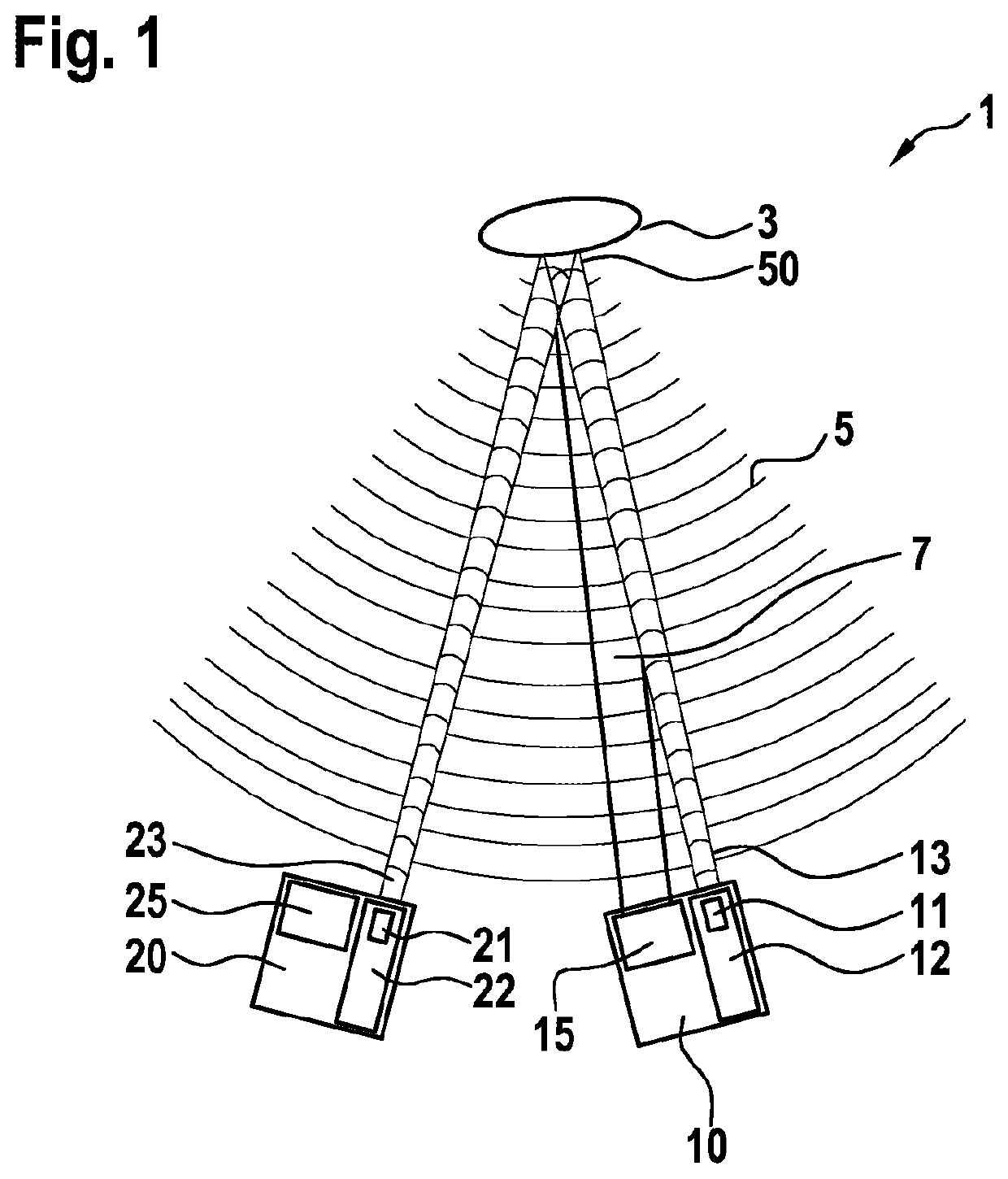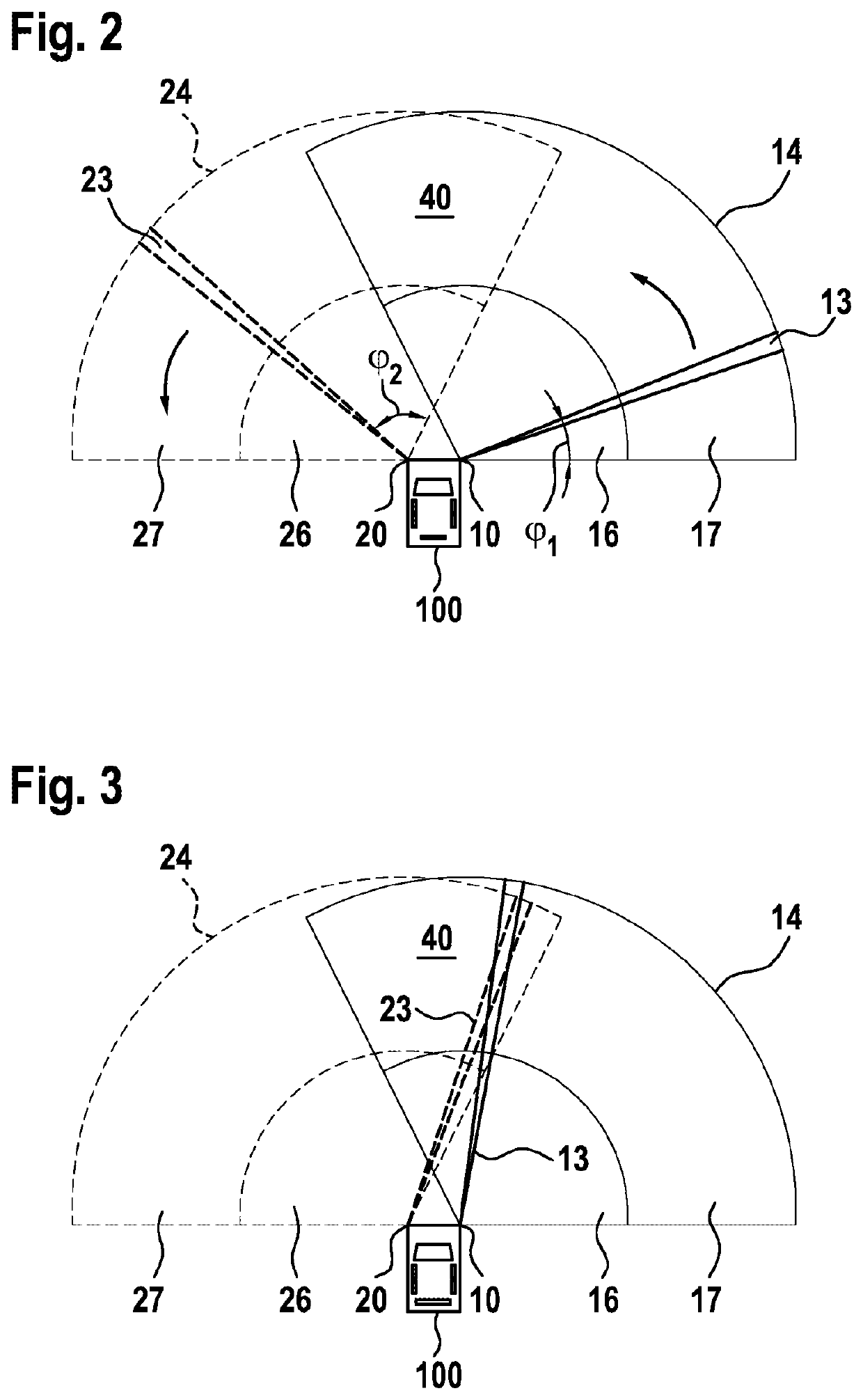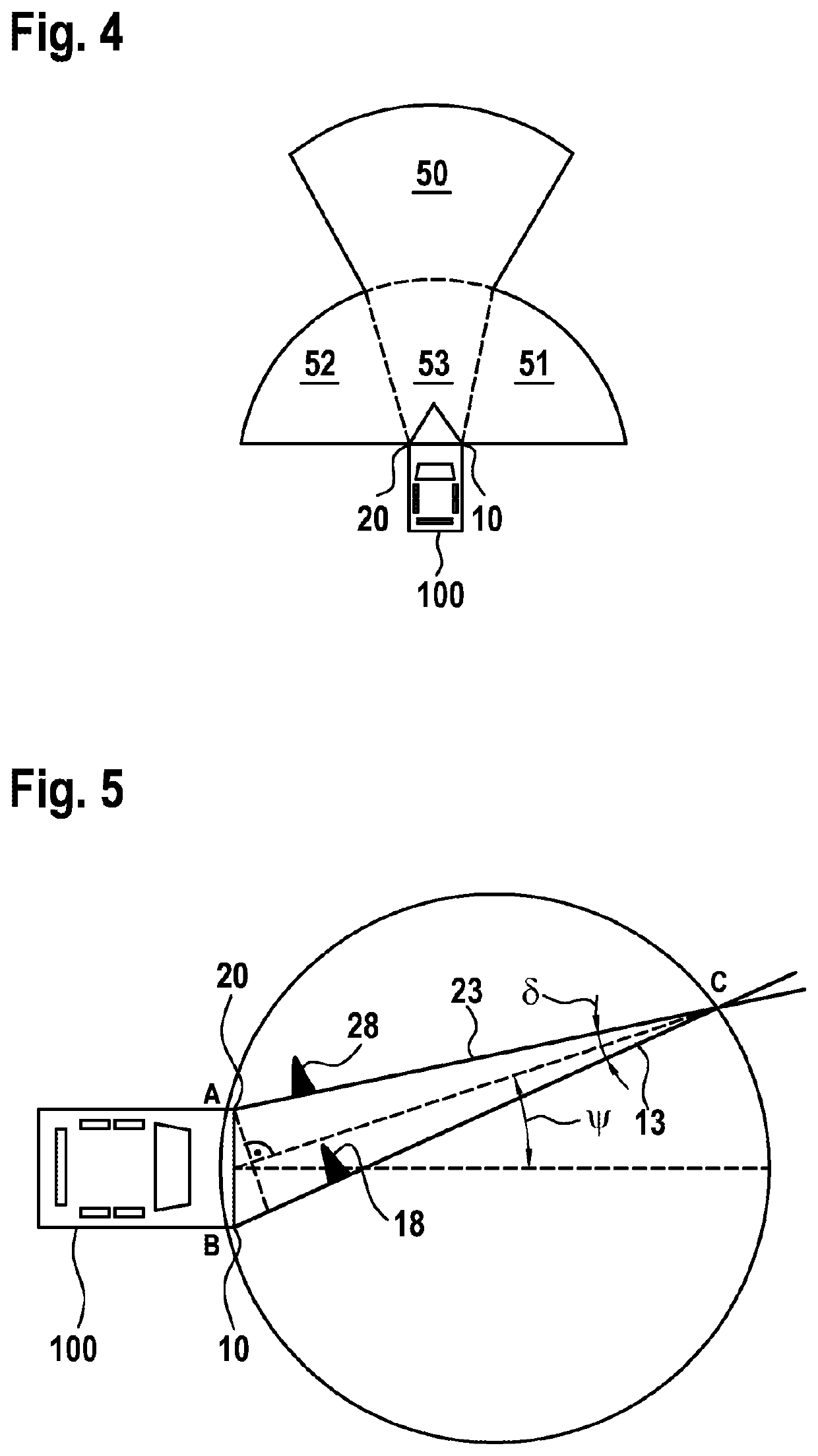Lidar arrangement, vehicle, and robot comprising a lidar arrangement of this type
a technology of lidar array and arrangement, which is applied in the direction of instruments, measuring devices, and using reradiation, etc., can solve the problems of limited detection range, individual lidar systems are accordingly not able to detect objects, and increase laser power only, so as to achieve double the intensity of strikes, increase the range of lidar array, and ensure eye safety
- Summary
- Abstract
- Description
- Claims
- Application Information
AI Technical Summary
Benefits of technology
Problems solved by technology
Method used
Image
Examples
Embodiment Construction
[0028]FIG. 1 shows an example LIDAR array 1 according to the present invention. The LIDAR array includes a first LIDAR system 10. First LIDAR system 10 furthermore includes a first laser source 11, which generates a first laser beam 13. First LIDAR system 10 furthermore includes a first scanning device 12 which scans first laser beam 13 across a first scan area 14. One example of a first scan area 14 may, in particular, be comprehensible in connection with FIGS. 2 and 3.
[0029]LIDAR array 1 furthermore includes a second LIDAR system 20. Second LIDAR system 20 also includes a second laser source 21, which generates a second laser beam 23. Second LIDAR system 20 furthermore includes a second scanning device 22 which scans second laser beam 23 across a second scan area 24.
[0030]Again, second scan area 24 may be derived in an exemplary embodiment from FIGS. 2 and 3. First LIDAR system 10 is furthermore spatially spaced apart from second LIDAR system 20. In other words, first LIDAR system...
PUM
 Login to View More
Login to View More Abstract
Description
Claims
Application Information
 Login to View More
Login to View More - R&D
- Intellectual Property
- Life Sciences
- Materials
- Tech Scout
- Unparalleled Data Quality
- Higher Quality Content
- 60% Fewer Hallucinations
Browse by: Latest US Patents, China's latest patents, Technical Efficacy Thesaurus, Application Domain, Technology Topic, Popular Technical Reports.
© 2025 PatSnap. All rights reserved.Legal|Privacy policy|Modern Slavery Act Transparency Statement|Sitemap|About US| Contact US: help@patsnap.com



